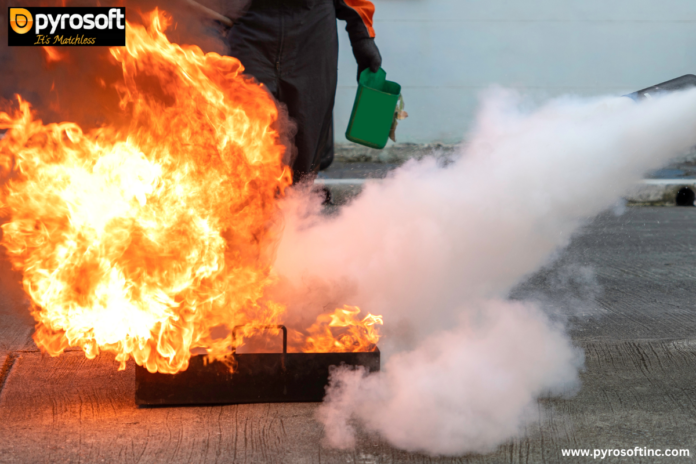Fire safety training is an important part of assuring workplace safety and preparation in a variety of contexts, including workplaces, manufacturing facilities, and public spaces. Traditional fire safety training techniques
frequently include theoretical education and hands-on practice with real-world fire scenarios, which can provide risks and restrictions. However, technological improvements have resulted in realistic fire simulators and fire extinguisher training simulators, which have transformed how people are trained to respond to fire crises.Realistic Fire Simulators:
Realistic fire simulators are novel technologies that simulate fire incidents in a controlled environment, providing a safe and immersive training experience. These simulators use advanced technology, such as augmented reality (AR) and virtual reality (VR), to simulate a variety of fires, including electrical fires, combustible liquid fires, and gas fires. Trainees can improve their abilities in detecting fire dangers, assessing risks, and implementing suitable response tactics by mimicking real-world fire occurrences.
One notable example of a realistic fire simulator is the use of VR headsets in conjunction with motion sensors to generate immersive fire simulation scenarios. Trainees can navigate virtual surroundings, engage with simulated fires, and practice utilizing fire extinguishing equipment without being exposed to real-life hazards. Furthermore, these simulators may imitate various environmental circumstances and challenges, such as poor visibility owing to smoke or barriers preventing access to fire exits, which improves the realism of the training experience.
Furthermore, realistic fire simulators are scalable and flexible, allowing training scenarios to be customized for individual sectors, facility layouts, and emergency response methods. These simulators can adapt to a wide range of environments, from commercial buildings to industrial operations, and solve the unique issues that each presents. Organizations may guarantee that their employees are well-prepared to deal with fire situations effectively and safely by introducing realistic fire simulators into their training programs.
Fire Extinguisher Training Simulators:
Fire extinguisher training simulators complement realistic fire simulators by teaching people how to use fire extinguishing equipment. These simulators mimic the operation of many types of fire extinguishers, including water-based, foam-based, CO2-based, and dry chemical extinguishers, allowing trainees to become acquainted with diverse extinguishing agents and their applications.
Traditionally, fire extinguisher training entailed utilizing live fires or inert training props, which may be expensive, logistically difficult, and possibly dangerous. However, fire extinguisher training simulators are a safer and more cost-effective option. These simulators use controlled flames or digital simulations to replicate fire situations, giving trainees hands-on practice with fire extinguishers without exposing them to real-world fire threats.
One significant benefit of fire extinguisher training simulators is their ability to provide instant feedback and performance reviews. Trainees can get real-time feedback on their extinguisher handling techniques, including targeting, sweeping, and staying a safe distance from the flames. Simulators can also measure learner performance parameters including extinguishing time, accuracy, and efficacy, which allows instructors to identify areas for improvement and provide focused corrective instruction.
Furthermore, fire extinguisher training simulators provide flexibility in deployment, allowing firms to conduct training sessions digitally or on-site. These simulators, whether through desktop-based simulations, mobile applications, or portable training units, provide individuals with convenient and accessible training options regardless of location or schedule.
Conclusion:
Realistic fire simulators and fire extinguisher training simulators are significant advances in fire safety training, providing immersive, safe, and effective learning experiences for people from a variety of professions and environments. Organizations can provide their employees with the information, skills, and confidence they need to respond quickly and effectively to fire emergencies by using technology to mimic actual fire events and extinguisher operation scenarios. As fire safety remains a top priority, including these simulators in training programs can help improve readiness, reduce risks, and ultimately save lives.
















